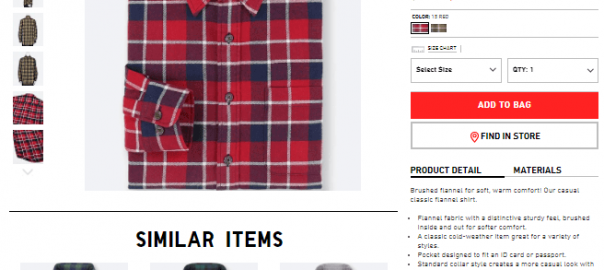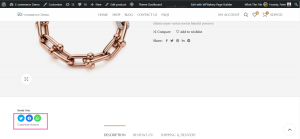— April 25, 2019
eCommerce link building strategies are those strategies you create in order to get links to and from your online store. Which makes link building an essential part of a winning DIY SEO strategy for online sellers and involves the practice of getting third-party links on other pages, blogs and/or content.
Why is this so important? Because it helps boost SEO scores and ultimately improves your organic traffic over time. A perfect DIY SEO strategy should include link strategies that generate a variety of link types.
Let’s break them down.
Link Types for eCommerce Link Building Strategies
There are three main types of links winning eCommerce link building strategies should include.
Backlinks
These are links to your content, pages and/or site from other domains. Your aim is to have as many links from reputable sites as possible, while ensuring they are relevant to the content (and anchor text) being linked to. Backlinking is also the quickest link building strategy you have at your disposal in terms of effectiveness and results.
Internal Links
These are links inputting into your content to other content pages on your site. In eCommerce terms, this could mean adding links in new posts to previous posts and making sure you have related content, adding related or upsell product links to checkout or product pages, or having FAQ and policy page links on various pages.
Outbound Links
These are links to other domains that you add to your site. There are two types of outbound links: dofollow and nofollow. Dofollow links are outbound links you include, where you haven’t edited the settings of the links. Nofollow links are those links you tell Google to ignore in order to protect you from questionable websites you are linking to.
You should be using nofollow codes if you’ve loaded sponsored content, preventing any irrelevancy issues, if you have linked to or from business directory sites or if the domain of the content you are linking to has a lot of spam content.
Now that we know what types of links your strategy includes, you may be asking, But why does this work?
The short answer is because link building creates trust, relevancy and authority. Let’s look at how link building improves these critical elements of SEO basics.
How Link Building Builds Trust
The higher your Google TrustRank score is, the better your SERP placement will be. This is because rankings are influenced by how much a search engine trusts your brand domains based on the trustworthiness of your site and links. Linking out to authority sites and having authority sites linking to your store means higher trust signal measurements (Google determining that your links and content are trustworthy) and improved rankings. You can learn about Google’s TrustRank in this Backlinko guide.
How Link Building Creates Relevancy
Links to your content and product pages and/or websites to internet pages covering relevant content. In other words, the relevancy of links plays a role in your store’s relevancy, which helps with SEO rankings. Let’s say you are a winning online fashion brand; you would want to aim to secure links on fashion blogs or influencer accounts.
How Link Building Forges Authority
The higher the authority of the page, domain or link, the better your SEO results will be. Google measures the three types of SEO authority separately, and therefore you would aim to link domains, content and pages that score higher in this area than you.
If you want your links to work for you, capitalizing on these three elements to drive traffic, you want to ensure you don’t forget your link signal basics. Link signals refers to anchor text, TrustRank, link similarities and ensuring that you are continuously adding new links (of all types) to your site to keep your eCommerce store relevant and popular in the eyes of Google.
Now that you know what link building can do for you in terms of SEO, let’s look at leading link building strategies for eCommerce to add to your DIY SEO arsenal – ultimately growing your organic eCommerce traffic enough to continually increase sales long term.
Strategy 1: Get Serious About Your eCommerce Blog
Even with the many advantages that blog content offers, so many online stores put eCommerce blog creation and management at the bottom of their to-do and budget allocation lists. To give you an idea, only 62% of the top apparel stores we looked at in a previous post have an active blog, press page or subdomain.
But unless you’re making millions in revenue and have enough traffic (said no store owner ever), ignoring the ROIs of blog content is a mistake. One study proved that brands posting 16+ blogs per month were ensured to generate over three times more traffic; with those stats, what have you got to lose?
Having an eCommerce blog chock-a-block full of highly relevant content is a key component for an SEO strategy. Not to mention helping establish you as an authority or influencer in your niche. However, another advantage of having a blog is increasing your outbound links to relevant content within your niche while also allowing you the opportunity to create share-worthy content that other content creators will link to.
Here are our top tips to help you gain more links from your eCommerce blog linking strategy.
- Add value with your content. This ensures that you are not only giving your potential customers the information they want but also ups your chances of other websites linking back to your content. Here’s an example of a good blog content strategy from Tattly:

- Include evergreen content. This is content that remains relevant by having a long shelf-life. This includes how-to guides, buying guides, big case studies (we will get to that in more detail later) and infographics. For example, how-to style guides were found to increase guest blog acquisition by 40%.
- Be consistent. You want to continuously create and post new content – whether that is once a month or eight times a month. The trick is to concentrate on quality over quantity. So start slowly and build yourself up.
- Don’t hard-sell. It’s tempting for brands to treat every bit of content as a sales pitch. But sales pitch content won’t get the links you want or establish you as a trustworthy, relevant brand. Instead, you want to direct traffic to your product pages from the content – not use your content as an advertorial.
- Create share-worthy content. The more shareable your content is, the better. This means testing and using a variety of content such as listicles (list articles), guides and original video embed content. This will also have the added benefit of keeping your readers interested by mixing it up.
- Link to other content. Remember that your blog content has huge inbound link potential. This is not only a must for link building strategies but will also add value to your readers by giving additional information and tips as well as improve your overall SEO by keeping traffic on your site for longer.
- Create case studies or do your own research. Another way of generating backlinks to your site is with unique case studies, research blog posts or web content pages. In an extensive Buzzsumo blog content study that analyzed over a million posts, they found that as much as half of those blog posts only got eight shares. They also found that as much as 70% of the analyzed posts were never linked to. However, it was proved that original research and associated report content has a much higher backlink rate.
Strategy 2: Show Off Your Expertise and Become a Niche Influencer
Once you begin to establish your brand as an expert through your high-value content, you want to spread that expertise around the web. Reaching out to popular blogs within your niche with guest post ideas is a link building strategy must. Guest posts not only establish you as an influencer to that site’s readers but offer high-value eCommerce link building opportunities.
So how do you build a guest blog strategy? Here is a step-by-step guide.
Step 1
Use Google search autocomplete and reverse image search, Twitter trend search, your competitors’ backlinks, and blog research tools such as AllTop.com and Buzzsumo to find content and site opportunities.
Step 2
You want to research the target reader, types of content they post, and product of each guest post opportunity. This will ensure your topic and brand would be relevant for their online publication and narrow down your list. You also want to check what their guest post application.
Step 3
Although you can submit a completed blog directly to these possible guest post opportunities, you may want to approach them with possible topics first. You can do this while requesting their guest post guidelines, as it will ensure you create something they are more likely to accept. Remember: every blog will have their own quality and publication rules, and writing for that format increases your chances of being accepted.
Strategy 3: Capitalize on the Power of Video
Video is the king of content and social engagement. It can also help increase backlinks when using video in a variety of ways to drive traffic to your online store. This doesn’t just mean posting engaging video to your blog and Facebook. It also enables you to use the power of the number one video platform, YouTube. Creating evergreen content, like informative how-to guides, could get you more video embeds to other websites in your niche.
Here are three simple ways that you can use video content to promote backlinks:
- Comment on other relevant videos with relevant links. But you want to be careful here, and not spam posts. Only post if you have some value to add to the content and only include links in response to questions that are highly relevant.
- Create accounts on various video sharing sites and share content regularly.
- Create link partnerships with organic video sharers. When other blogs and influencers link to your YouTube videos, you can follow up and contact them regarding inserting a link to your store in the post.
Additionally, placing video content on your site has huge SEO advantages. Video content increases the time a site visitor will spend on your page while contributing to page quality and relevance.
Strategy 4: Engage and Socialize
Your social platforms are your backlink bread and butter, so to speak. This means creating social profiles with relevant online store links, as well as including links in your profiles and cover image descriptions. You also want to add links to your contact page from the ‘about’ sections or profiles of your social accounts. This, of course, is the bare minimum and isn’t limited to social media.
Forums like Quora and Reddit have great traffic opportunities. Despite links being nofollow links, it’s important that you have a variety of links (dofollow and nofollow), which signals authenticity to Google – and these forums offer that in a big way. In short: follow or not, well-placed links can drive a lot of eCommerce traffic.
Plus, they allow you to engage with users who are asking specific questions related to your niche and give you a platform to show off as an expert. By including links (that are relevant) in blog content, product pages or helpful guides, you are showing off your niche authority to not only the person who asks but the millions of site visitors that access the question.
Strategy 5: Turn Mentions into High-Value Backlinks
If an influencer, blogger or brand mentions your brand in their content, it can be a considerable backlink opportunity for you. Approaching these people who have already mentioned your brand with a request to add a link with the mention, can pay off.
But how do you find out who has mentioned your brand? There are a bunch of tools out there, but our favorite is Mention. Mention has a free trial and then starts at just $ 25 per month. Additionally, don’t forget Google Alerts (free) will also help you find brand mentions.
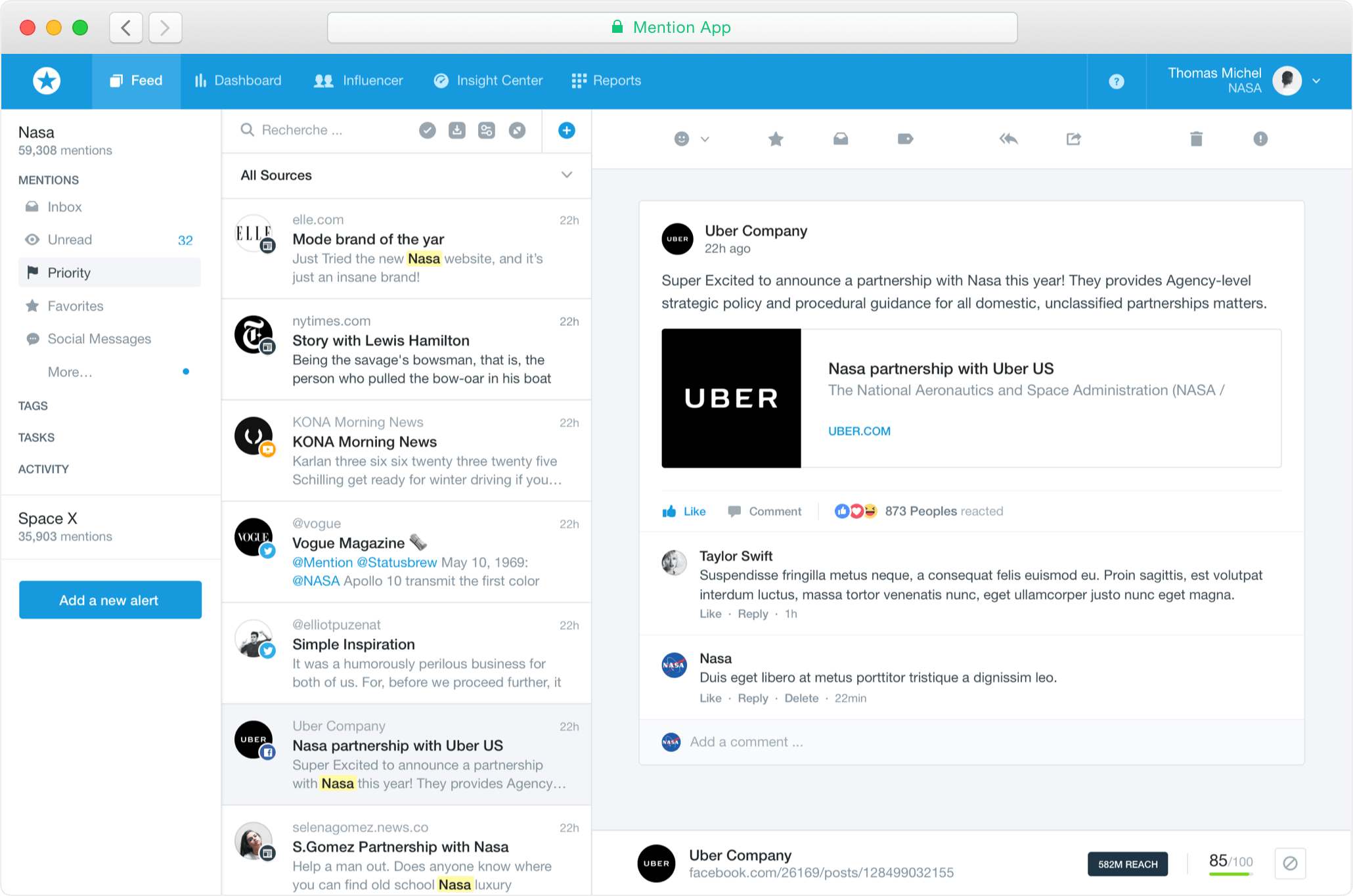
Before you make your request, you want to make sure that your brand is indeed mentioned and that it’s mentioned in a positive light. You also want to ensure that the site that is linking to your brand is reputable. The latter is very important to ensure links are working for you, not against you.
In the case of an unwelcome backlink, you will want to contact the site’s webmaster and ask that your link be removed, or if you have exhausted all options, use Google’s Disavow Tool – but more on that later.
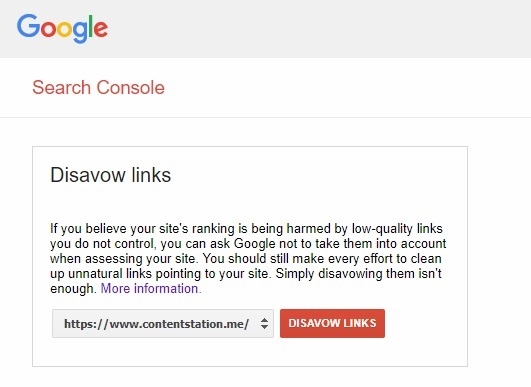
Strategy 6: Partner With Influencers
Another important link building strategy for online sellers goes hand in hand with influencer marketing. By teaming up with influencers across various content streams to highlight specific products, you can create valuable backlinks to specific product pages.
Influencers provide a good way for you to generate better natural backlinks for your online store. The added bonus here is that influencer mentions also help build brand awareness and include content reach and engagement while also improving your SEO standing. Ultimately, enabling you to reach new potential shoppers within niche segments.
However, you want to find high-authority domains that are relevant to your site. Why? According to Moz, the quality and authority of sites that link to you are among the top search engine ranking factors.
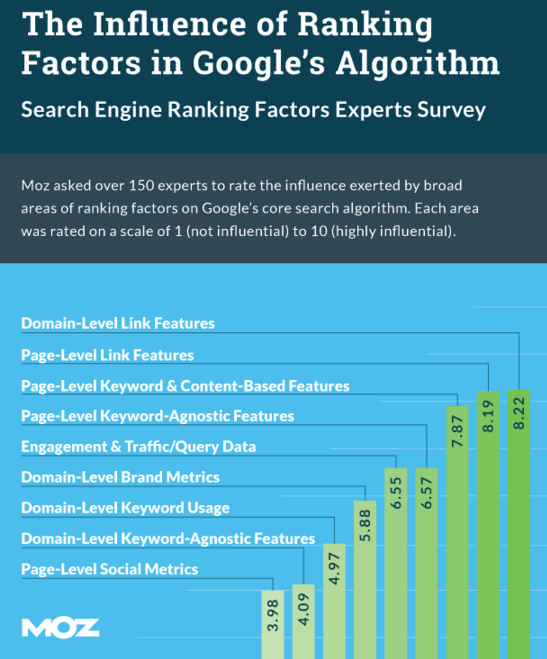
Image via Moz
Influencers can be bloggers, social media influencers (such as Instagram influencers and YouTube stars), celebrities, industry experts, thought leaders and popular brand blogs.
Strategy 7: Build a Winning Brand Ambassador Community Program
Another way to create your own influencer channels – and links – is by building a brand ambassador program. The advantage of this is having brand-lovers posting about your brand across various sites and platforms on your behalf. What you want is to incentivize your loyal shoppers to share product page links and drive traffic, while engaging directly to segments of users who fit your ideal target shopper. Think of it as UGC and micro-influencing on steroids, while racking up your dofollow and nofollow links.
If you’re just starting out and can’t afford to invest in programs like Glam Guru’s awesome affiliate program, there are ways you can encourage organic brand ambassadors by ensuring your online business offers the best service. Basically, you want to under-promise and over-deliver with every aspect of your business. Here are a few ways to get started:
- Ensure your customer service is top-notch
- Be upfront and honest
- Encourage feedback
- Personalize their shopping experience
- Create loyalty programs
- Offer rewards
- Give surprise free goodies
- Communicate well throughout the buying process
You also want to invest in creating an active review and UGC collection strategy as these also help with your eCommerce link building strategies. An organic rave review of your brand or interesting story about your product has a lot of potential for being used in blog content. And bonus: it improves your branding, reach and conversion potential, too.
Strategy 8: Strategic Deep Linking
As we mentioned earlier, you want a variety of links (not just your online store and/or blog home pages). You want to include links to specific product pages, categories and specific blog content pages, known as deep links. You want to use deep links in your internal, outbound and backlink strategies.
So, what are the advantages of deep linking strategies?
They improve SERP rankings for your whole site (not just your homepage), ensure Google sees your online store authority as natural, and of course create conversion opportunities from higher ranked pages.
And what pages should I be deep linking? You want to be selective and start with pages already getting good traffic. Here are some tips on how you can use deep links:
- When creating and submitting guest posts, instead of linking to your home page, link to a specific store or blog post pages that you have chosen for your deep links.
- Share your specific blog posts and content and category pages to as many places as possible, including all the places mentioned – i.e. have influencers and/or mentions going to your select page links instead of just your homepage.
- Use specific, relevant page links in your comments and forum engagements as well as on content sharing sites like AuthorStream and Slideshare.
Strategy 9: Leverage Popularity and Viral Appeal
As we discussed above, reviewing and choosing product page links for eCommerce linking strategies is very effective. An excellent way to do this is by leveraging popular, newsworthy products. Or products that are unique enough to have viral potential within your segments. A good example of this is an online t-shirt store that has been making the rounds on social media and trending topic blogs like Bored Panda.

The online store The Man Who Has it All has ‘his’ and ‘hers’ Ts that are now internet famous and getting backlinks from all sorts of places, including this blog. I’ve seen their Facebook posts shared to a number of groups I am a part of, and the organic engagement has been crazy. A great example of a perfect (word of mouth marketing) storm.
Now, not all your products will go viral in such a big way. However, if you have a unique spin on something ordinary, like this brand, you have a lot of backlink (and sales) opportunities in your niche. You can still make a stir in your segments without aiming to reach everyone everywhere.
And it’s not just products that can go virtual. Using your influence to link to worthy causes, sponsored events or charities, or running unique promotions and campaigns can have a great effect. An inspirational example of this is REI’s OptOutside campaign, which they run on Black Friday.
Strategy 10: Upgrade Your UX
If you want your pages to be linked to, you want them to be link-worthy. This means you may need to upgrade your online store to help generate more shares and links. There are a lot of ways you can tweak your eCommerce UX. However, you want to concentrate on your deep link pages first. This means ensuring your product and category pages are not only sharable but link-worthy. To promote this organically, your product/category pages should be:
- Unique and in the voice of your brand
- Optimized for SEO and shoppers
- Well-designed and free of mistakes
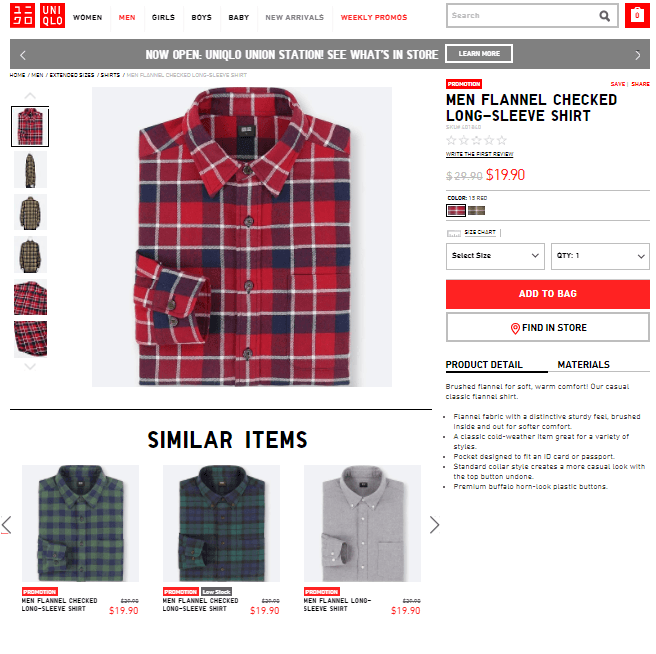
Strategy 11: Spy On Your Competitors
One of the best ways to find backlink opportunities is by looking at your competitors. With tools like Moz’s Open Site Explorer or Ahrefs’ Link Inspect, you can ‘borrow’ your closest competitor’s backlinking strategy and find untapped opportunities for yourself. Here’s an in-depth guide from Neil Patel on how to use competitor links to boost your domain authority.
Strategy 12: Fix Broken Links
Remember we mentioned how important it is to track your backlinks and use the Google Disavow Tool when necessary? Fixing broken links should also be part of your link management practices. To do this, you should be checking them regularly to ensure they are not damaging your link building strategy efforts. Finding and requesting broken links can be a consuming task. For this, we highly recommend a tool like Ahrefs to streamline your search.
And what to do when you find a broken or spammy link you want removed? Here’s how to disavow links using Ahrefs and Google Webmaster Tools to get you started.
—
With these 12 eCommerce link building strategies, you’re well on your way to better ranking, reach and more eCommerce traffic!
Have DIY SEO questions? Post them in the comments below and our traffic gurus will assist.
Digital & Social Articles on Business 2 Community
(35)
